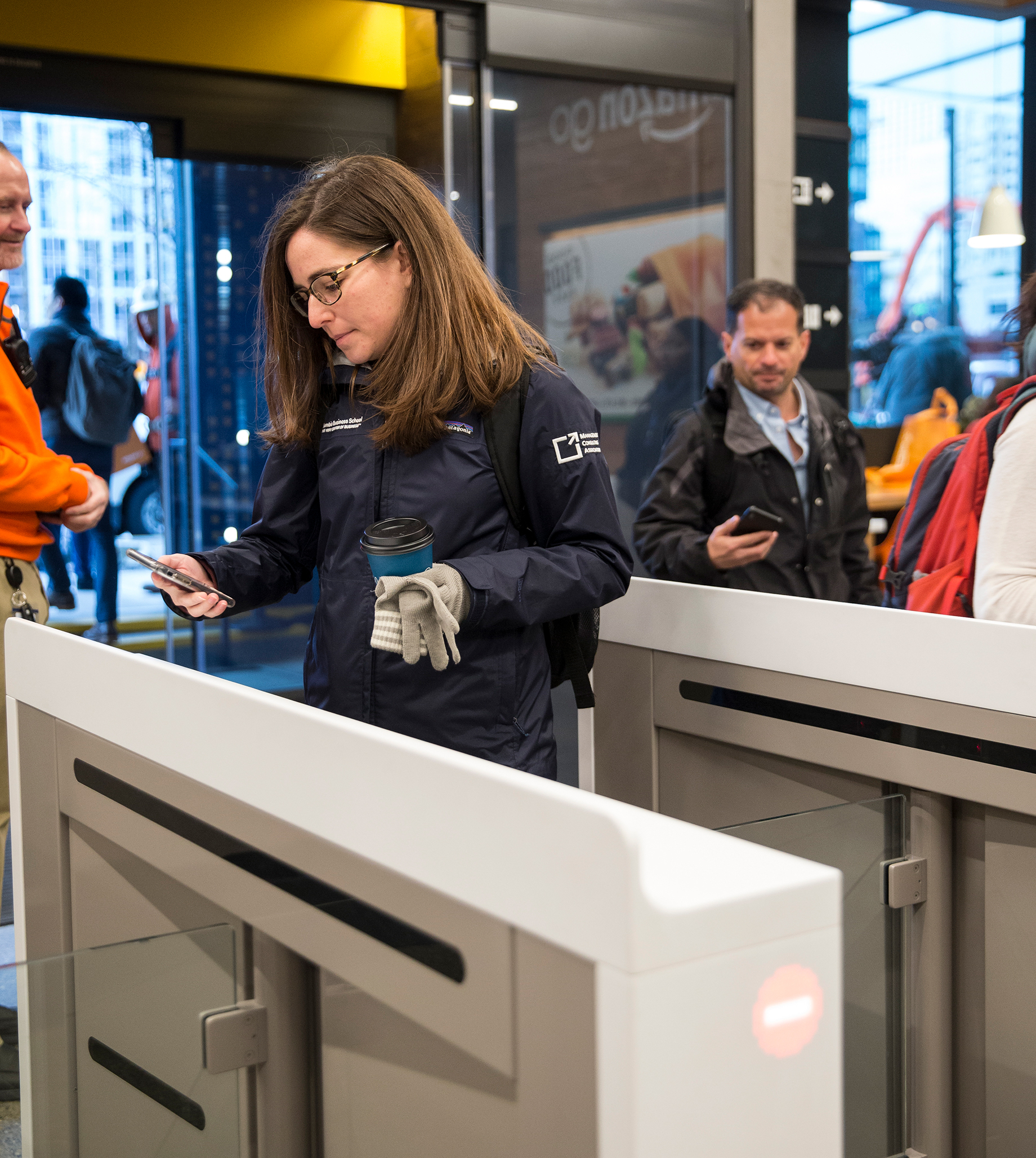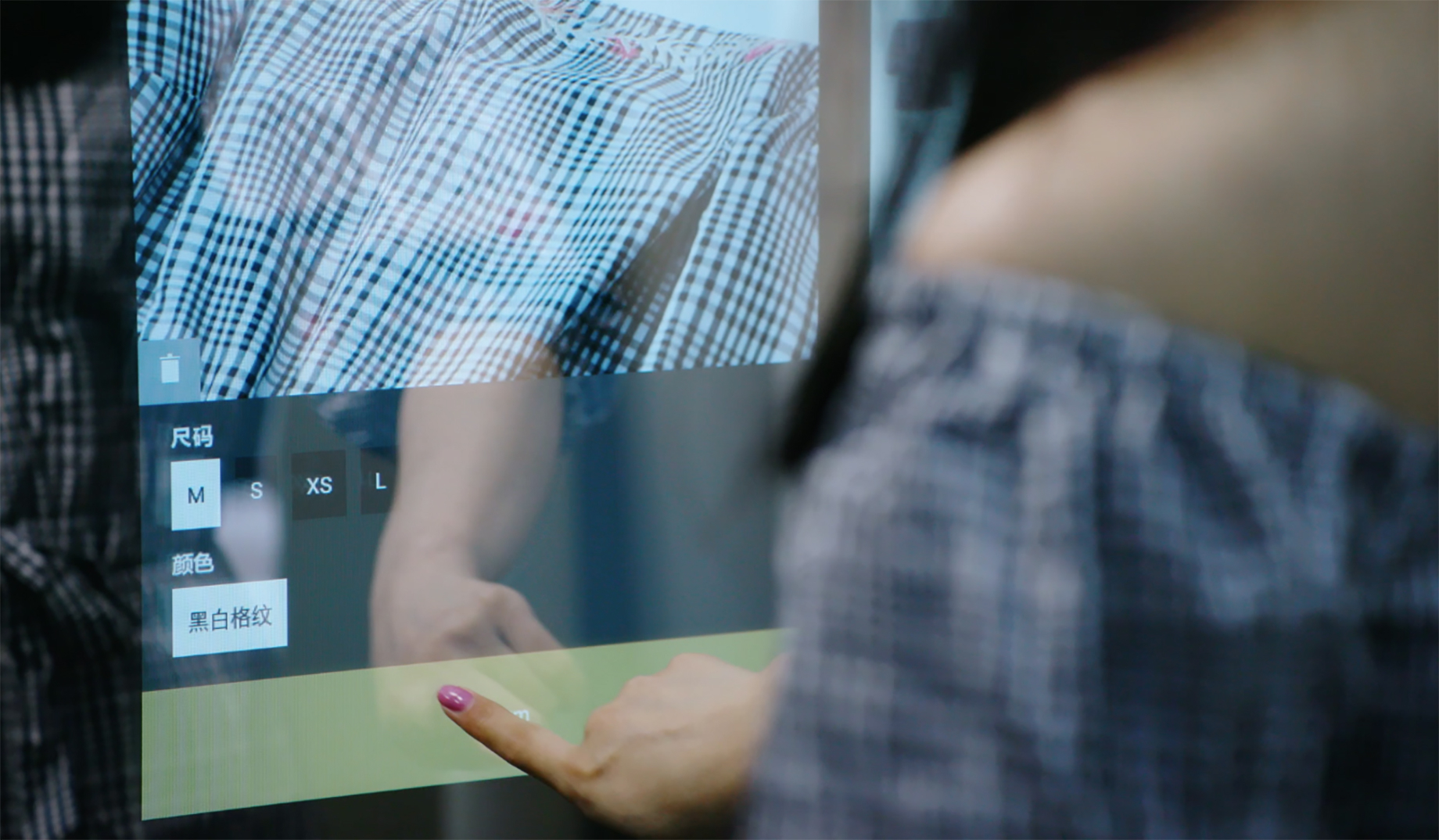Chinese retailers offer shoppers a glimpse of what the retail future could look like, with fully automated, self-service stores. Such concepts as EasyGo and BingoBox operate somewhat like a huge vending machine: Shoppers patronize these “staffless” stores independently, using their smartphones to summon up and scan merchandise and then to pay for it upon exit. Alibaba, for one, is rolling out dozens of highly automated HEMA supermarkets.

Shoppers scan the Amazon Go app on their mobile devices as they enter the Amazon Go store, in Seattle
U.S. retailers too are trying to figure out how they can leverage automation to improve the customer experience. “We haven’t seen as much of it in the U.S., but we are absolutely seeing a move towards more automation in the stores, with cashier-free automated kiosks, ordering kiosks and order-ahead apps,” said Melina Cordero, CBRE’s head of retail research for the Americas. Increasingly, retailers are seeking ways to improve the shopping experience and also to reduce labor costs while improving operational efficiency. “Convenience is number one for the U.S. consumer, so every retailer is thinking about how they can drive that and lower the friction points of getting people into the store,” Cordero said.
Amazon Go has spearheaded efforts in the U.S. using so-called “just walk out” technology, notes Donna Stevens, director of store-transformation solution management at tech company NCR Corp. The Amazon Go stores allow shoppers to skip the checkout lines by relying instead on sensors and product-tracking technology.
Walmart and Kroger are testing out mobile scanning that enables shoppers to scan and pay by smartphone. On the apparel side are Zara and Burberry, both of which are experimenting with self-service kiosks at select stores for online orders and returns. Meanwhile, Nordstrom and Sephora employ mobile POS systems like those at Apple stores, by which sales associates can do checkout for the shopper from anywhere on the sales floor.
“These retailers are pretty open-minded about how they are tackling the checkout problem and the queuing problem and [about] finding ways to make it easier for consumers,” said Stevens. Where retailers may struggle, she says, is in expanding these initiatives across their broader store network.

China's Alibaba introduced a FashionAI store at Hong Kong Polytechnic University for shopping with the aid of artificial intelligence. The store showcases apparel through “smart mirrors” that display product information on a nearby screen when shoppers handle a garment
Among the downsides to this type of self-service technology are the risks of theft, fraud and losing a touch point with the customer at the point of sale. But on the upside, being able to automate the rote tasks in these transactions frees up the retailer to focus on direct customer service and assistance, Cordero notes.
Retailers also need to consider the value proposition that the technology is bringing, proponents say. “You have to have a real business case behind it,” said Stevens. “What’s the right balance of this disruptive technology, and where is the tipping point between introducing technology that is cool but also really provides efficiencies and savings?”
It is virtually certain that some retailers will be eager adopters of these systems, while others will take a wait-and-see approach, observers say. In either case the customer is, as always, the key element. “I think a lot of this is not how fast the technology will move, but how fast the customer is willing and able to move,” argued Ken Nisch, chairman of Southfield, Mich.–based JGA, which designs stores and shopping centers. Indeed, even among customers willing to embrace store automation, there are those who have credit problems or who lack the smartphone technology, he asserts.
The focus over the next year or two will be on experimentation to find out what works, according to Stevens. Retailers and tech providers will continue testing walk-out technology, and they will also be looking increasingly at identity-authentication systems, such as those that use fingerprint-recognition or age-verification technology, she says.
“Most of the retailers that we are talking to believe that there is a place for technology in their stores,” said Stevens. “They just want to make a smart decision about what that technology is, and how they [can] go about introducing it the right way.”
By Beth Mattson-Teig
Contributor, Commerce + Communities Today


